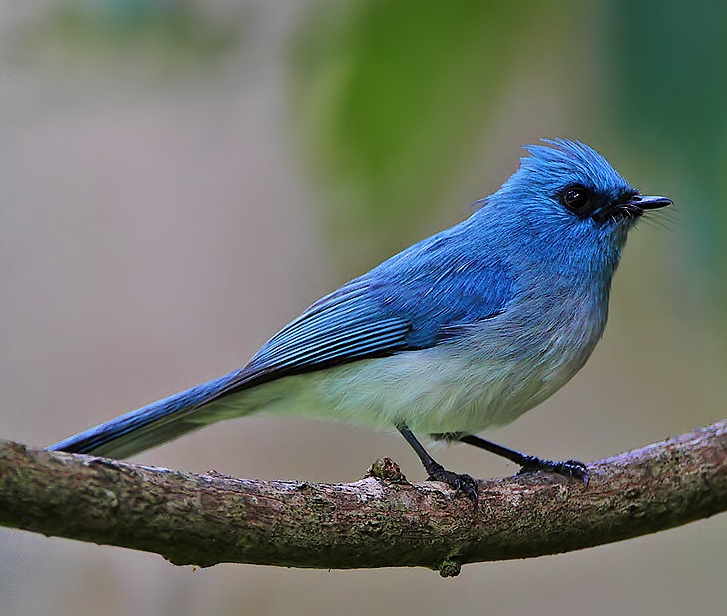 |
| Photo by Steve Garvie (Flickr) |
Common name:
African blue flycatcher (en); monarca-azul-africano (pt); elminie bleue (fr); elminia azul (es); türkiselminie (de)
Taxonomy:
Order Passeriformes
Family Monarchidae
Range:
This species is found in sub-Saharan Africa, from southern Senegal to South Sudan and south to northern Tanzania, D.R. Congo and northern Angola.
Size:
These birds are 13-15 cm long and weigh around 10 g.
Habitat:
The African blue flycatcher is mostly found in moist tropical forests, especially secondary forest, swampy or riverine forests. They are also found in dry savannas, scrublands, mangroves, rural gardens, arable land and cocoa plantations.
Diet:
They mainly feed on insects and other arthropods, which can be hawked or gleaned from the foliage.
Breeding:
African blue flycatchers are monogamous and nest in a compact cup placed in a fork in a low tree. There the female lays 1-2 white eggs which are incubated by the female alone. The chicks are fed by both parents. There is no information regarding the incubation and fledging periods.
Conservation:
IUCN status – LC (Least Concern)
This species has a very large breeding range and, although the global population size has not been quantified, the African blue flycatcher is described as uncommon to locally common. The population is suspected to be stable in the absence of evidence for any declines or substantial threats.







